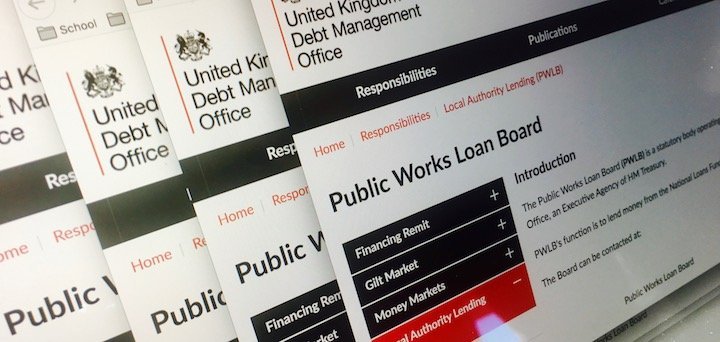
Local authorities ramped up their borrowing from the Public Works Loan Board (PWLB) in the year to April, increasing the statutory body’s liabilities by 10.5%, according to the body’s annual report.
Figures in the PWLB’s 2018/19 accounts, released this week, show liabilities of £78.34bn, up from £70.88bn the year before – driven by a 76.9% increase in new loans advanced to councils and other bodies in the 12 months.
HM Treasury sets a cap on the PWLB’s maximum liabilities, which is currently £85bn.
A current-year increase in the magnitude of liabilities on a par with last year’s would breach the existing cap.
However, the Finance Act 2014 allows the Treasury to legislate to either lower the cap or legislate to raise it up to a maximum of £95bn.
The report said new loans advanced in the year amounted to £9.13bn, up from £5.18bn the previous year.
Deducting the value of maturing loans and early redemptions gave a £7.42bn net increase in loans principal in 2018/19 compared with £3.51bn the year before.
The net increase figures for 2018/19 break down as £9.13bn of new loans offset by £1.71bn in repaid loans and £3m of loans redeemed early.
The PWLB – which is overseen by the Treasury’s UK Debt Management Office executive agency, is not required to examine the purpose of a loan sought by a “major” local authority, such as a district, county or a metropolitan borough council because spending and borrowing decisions lie with elected members.
However, councils are required to adhere to statutory codes when making borrowing decisions.
In April, Room151 reported that a combination of Brexit-related uncertainty and plummeting PWLB interest rates had contributed to the highest monthly borrowing on the part of councils for seven years.
Authorities are also making use of attractive rates to invest in commercial property with an eye to securing long-term income streams to support services.
Ministry of Housing, Communities and Local Government figures on 2018/19 council borrowing released last month suggested that councils were holding onto large quantities of the cash they were borrowing.
David Green, strategic director at independent treasury-management consultancy Arlingclose, told Room151 that the borrowing increases last year could have had a multitude of drivers.
“As well as property investment, local authorities may have been borrowing pre-Brexit for 2019/20 expenditure, in the expectation that interest rates may rise in the near future,” he said.
A breakdown of new borrowing by council type showed that district councils borrowed the most in both 2017/18 and 2018/19, accounting for £2.21bn and £3.01bn in new advances respectively.
County councils more than doubled their new PWLB borrowing, upping their new advances from £390m in 2018/19 to £934m last year.
Principal councils in Wales marked a near threefold increase in their new loans over the period, arranging £477m in new PWLB finance in 2018/19 against £129m the previous year.
In addition to major councils, parish councils and town councils, the PWLB can also make loans to other public bodies, such as local drainage boards.
The 2018/19 report indicated that new advances of loans to other bodies in England had increased to £1.05bn last year, up from £282m the year before.












